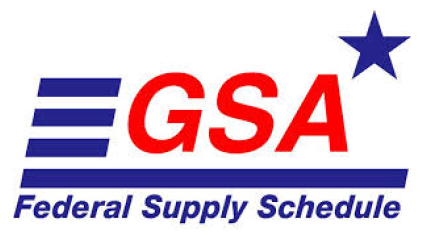Introduction
In the competitive landscape of government contracting, collaboration can be a powerful tool for businesses seeking to enhance their capabilities and secure contracts. Teaming and forming joint ventures (JVs) allow companies to pool resources, share expertise, and offer comprehensive solutions that might be beyond the capacity of a single firm. This detailed guide explores the benefits of these collaborative arrangements, offers guidance on establishing and managing partnerships, and provides key considerations for ensuring success in government contracting.
Understanding Teaming and Joint Ventures
Teaming involves two or more companies collaborating to bid on and execute a government contract. Typically, one company acts as the prime contractor, managing the contract and holding the primary relationship with the government agency, while the other companies serve as subcontractors, delivering specific services or products.
Joint Ventures (JVs) are formal business arrangements where two or more parties create a separate legal entity to pursue a contract. In a JV, partners share ownership, management, profits, and liabilities according to a detailed agreement. Unlike teaming, which may be more flexible, JVs often involve a deeper level of integration and commitment.
Benefits of Teaming and Joint Ventures
1. Enhanced Capabilities and Resources
- Teaming: Allows firms to access specialized skills and technologies that complement their own, enabling them to bid on more complex and larger contracts.
- Joint Ventures: Offers a unified entity that combines the strengths of each partner, providing a more robust solution to meet the government’s needs.
2. Increased Competitiveness
- Combining the past performance records and qualifications of multiple companies can strengthen a proposal. This collaborative approach can demonstrate comprehensive expertise, making the bid more appealing to government agencies.
3. Access to Set-Aside Contracts
- Small businesses, including those with special designations like Women-Owned Small Businesses (WOSBs), Service-Disabled Veteran-Owned Small Businesses (SDVOSBs), or HUBZone businesses, can team up to qualify for set-aside contracts, broadening their market opportunities.
4. Risk Sharing and Mitigation
- Collaborative arrangements distribute risk among partners, reducing the impact on any single entity. This is particularly advantageous in complex projects where financial and operational risks are significant.
Establishing a Teaming Agreement
A well-structured teaming agreement is essential to clarify expectations and responsibilities. It should address the following key elements:
- Scope of Work: Define the specific tasks and responsibilities of each partner, ensuring clarity in deliverables and timelines.
- Roles and Responsibilities: Detail the prime contractor’s obligations and the subcontractors’ contributions, including management roles and decision-making authority.
- Confidentiality and Intellectual Property: Protect sensitive information and define the ownership of intellectual property developed during the partnership.
- Compensation Structure: Outline how payments will be managed, including pricing terms, invoicing procedures, and profit-sharing arrangements.
- Duration and Termination: Specify the duration of the agreement and conditions under which it can be terminated, including breach of contract or completion of the project.
- Dispute Resolution Mechanisms: Include methods for resolving conflicts, such as mediation or arbitration, to avoid litigation.
Forming a Joint Venture
Creating a joint venture requires careful planning and consideration, as it involves a more formal and binding arrangement than teaming. Key steps include:
- Partner Selection: Choose partners with complementary skills and a shared vision. Assess each partner’s financial stability, reputation, and experience in government contracting.
- Determining the Legal Structure: Decide whether the JV will be structured as a corporation, limited liability company (LLC), or partnership. This decision affects tax implications, liability, and the level of control each partner has.
- Drafting the Joint Venture Agreement: The JV agreement should comprehensively cover:
- Ownership Stakes: Define each partner’s ownership percentage and contribution (capital, resources, expertise).
- Management and Governance: Detail the governance structure, including the roles of key executives and the decision-making process.
- Profit and Loss Distribution: Establish how profits and losses will be allocated among the partners.
- Operational Responsibilities: Specify operational roles, including project management, financial oversight, and compliance with contract requirements.
- Exit Strategy: Plan for the dissolution of the JV, including the distribution of assets and liabilities.
- Compliance and Certification: Ensure the JV complies with all relevant government regulations, especially if pursuing set-aside contracts. This includes maintaining eligibility criteria for size standards and special designations.
Managing the Partnership
Effective management is crucial for the success of both teaming agreements and JVs. Key management practices include:
- Regular Communication and Meetings: Schedule consistent meetings to review project progress, address issues, and align on strategies. Open communication channels are essential for transparency and collaboration.
- Performance Monitoring and Evaluation: Track the performance of all partners against agreed-upon metrics and milestones. Use these evaluations to make adjustments and ensure compliance with contract terms.
- Conflict Management: Anticipate potential conflicts and have predefined processes for addressing them. This proactive approach helps maintain a positive working relationship and prevents escalation.
- Continuous Compliance Reviews: Regularly review compliance with contract terms, government regulations, and the partnership agreement. This is particularly important for maintaining eligibility for set-aside contracts and avoiding penalties.
Key Considerations and Best Practices
- Due Diligence: Perform thorough due diligence on potential partners, including financial health checks, reference checks, and a review of past performance in government contracts.
- Clear and Consistent Communication: Foster an environment of open communication, ensuring that all partners are aligned on goals, expectations, and project progress.
- Legal and Financial Advice: Engage legal and financial advisors to navigate the complexities of forming and managing teaming agreements and JVs, ensuring compliance with federal regulations and contract requirements.
- Comprehensive Documentation: Maintain detailed records of all agreements, communications, and project developments. These records are vital for accountability and can be critical in resolving disputes or during audits.
- Flexibility and Adaptability: Be prepared to adapt to changing circumstances, whether they involve shifts in project scope, regulatory changes, or market dynamics. Flexibility is key to maintaining a successful partnership.
Conclusion
Teaming and joint ventures offer significant advantages for businesses looking to enter or expand their presence in the government contracting space. By pooling resources and expertise, companies can tackle larger and more complex projects, mitigate risks, and access a broader range of opportunities. However, success in these collaborative arrangements requires careful planning, clear agreements, effective management, and a deep understanding of the regulatory landscape. Members are encouraged to utilize this comprehensive guide and the resources available on our portal to navigate the complexities of teaming and joint ventures and optimize their strategies for success in government contracting.
For further guidance and support, please access our exclusive member resources.








